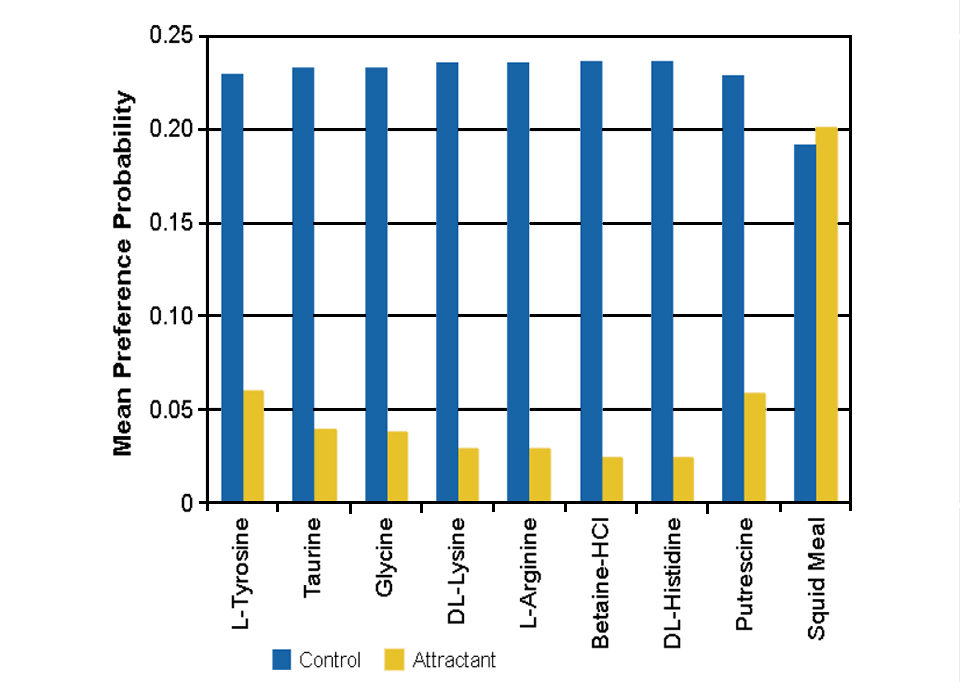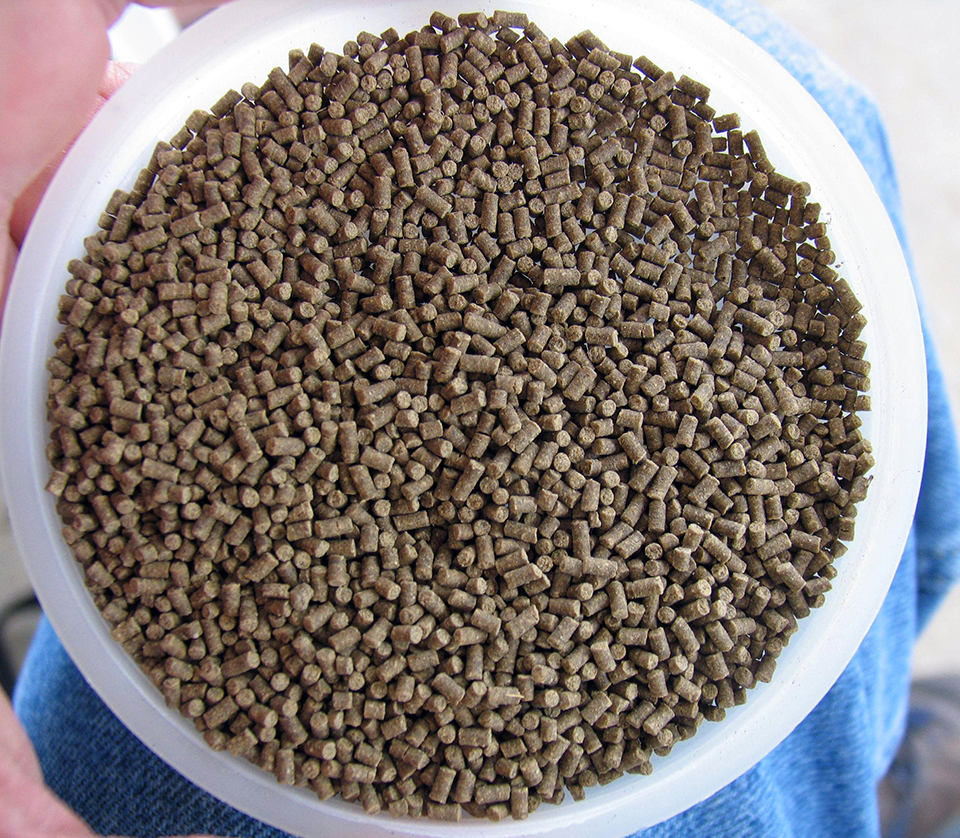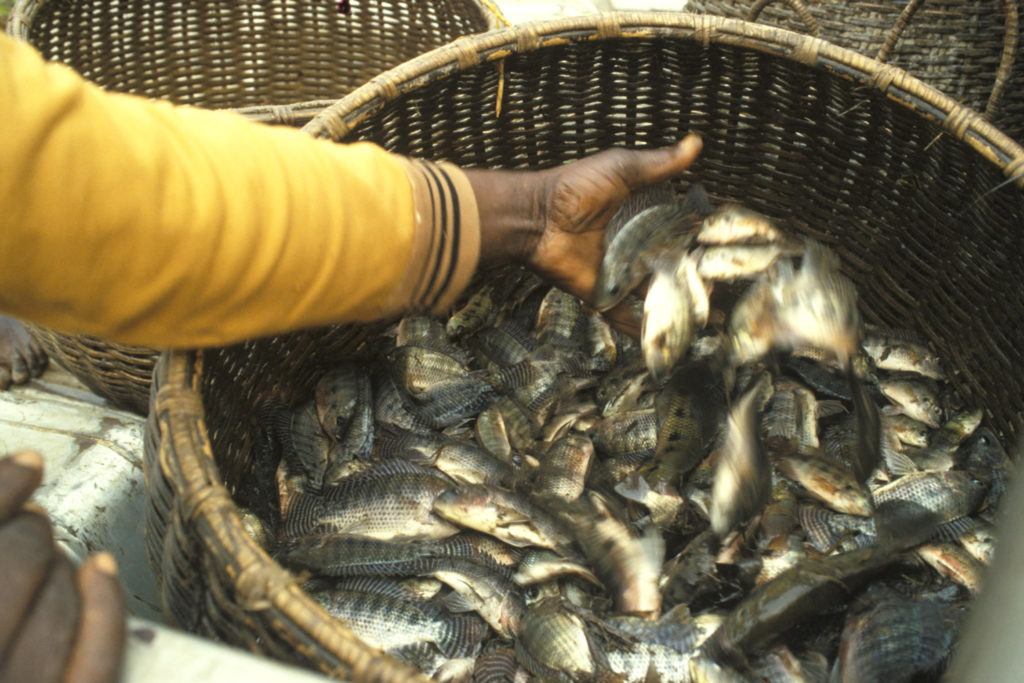Experimental study identifies attractants for rapid feed uptake
Marine shrimp possess the ability to detect and differentiate among a multitude of environmental chemical stimuli. Whether olfactory, gustatory, or both, this ability is referred to as chemoreception. Chemoreception enables shrimp to identify potential predators, mates, symbionts, changes in the chemical makeup of their environments, and sources of food.
Due to the high cost of feed, rapid food identification and ingestion by cultured shrimp is of major economic importance. Further, since 50 to 100 percent of the low-molecular-weight, water-soluble compounds in feeds can leach out within one hour after the feed is added to culture water, it is critical that feed is quickly ingested for greater nutrient quality and reduced potential water pollution.
Low-molecular-weight compounds
Most chemoattractants for shrimp are metabolites with low molecular weights below 1,000 daltons. They include amino acids, quaternary ammonium compounds, nucleotides, nucleosides, and organic acids. As a group, low-molecular-weight substances are water-soluble and occur in tissues at concentrations many orders of magnitude higher than those in the aquatic environment.
The introduction of these substances into the aquatic environment from the tissues of prey species can be caused by leakage, excretion, tissue damage, or decomposition. Assimilation of these low-molecular-weight compounds by bacteria as well as higher organisms serves to keep ambient concentrations low.
Evaluating chemoattractants
The development of methodology to evaluate the effectiveness of one chemoattractant relative to another is an important step in reducing the amount of feed used in commercial aquaculture. The process of ranking chemoattractants can be achieved by assigning data to an ordinal scale or by transforming discrete data to a hypothesized underlying scale. Although ordinal methods can be very useful with regards to ranking, they lack the ability to measure the magnitude of difference between the objects ranked.
Furthermore, depending on experimental design, ordinal ranking scales require assessors to learn specific scoring systems that can be dependent on previous questions or observations, thus placing demands on the assessors’ experience and training. In contrast, paired comparison tests only require that assessors choose which of two objects is greater with respect to a predefined attribute.
Counting the number of shrimp present on a feeding tray at each observation is a useful paired comparison. Transforming this discrete data to a log-linear scale provides an estimated magnitude of difference between the two objects compared.
Individual ingredients can also be indirectly ranked relative to one another within an experiment by conducting pairwise comparisons of all possible choice combinations. This can be very useful when evaluating potential chemoattractants and their levels of inclusion with respect to cost as well as efficacy.
TAES study
In May 2003, a 19-day study of chemoattractants at the Texas Agricultural Experiment Station of Texas A&M University in Port Aransas, Texas, USA, used an experimental system consisting of nine fiberglass tanks 3.4 meters in diameter. Each tank was stocked with 50 pacific white shrimp (Litopenaeus vannamei) with initial weights of about 7.6 grams.
Each tank contained two sets of two 0.6-square meter black, gel-coated fiberglass feed trays, with each set placed against opposite tank walls. Experimental feeds were formulated to contain 10 percent crude protein and 4 percent low-molecular-weight compound on a dry-weight basis. The compounds tested were L-tyrosine, taurine, glycine, DL-lysine, L-arginine, betaine-HCl, DL-histidine, and putrescine.
Each experimental feed was added to the feed trays at a rate of 6 percent of shrimp body weight. The number of shrimp on each set of trays was observed at 15-minute intervals over two hours. Applied every other day, experimental feeds were rotated through all nine tanks, and tray positions were alternated each trial day to reduce within-system variability.
On days opposite the chemoattractant trials, a single feeding of commercial shrimp feed was hand-broadcast into the tanks at a rate of 5 percent of the shrimp wet body weight. The average shrimp growth during the experiment was about 1.05 grams per week.
For this experiment, the basic Bradley-Terry model of paired comparisons was extended to three choices to account for the entire population of each experimental tank at each 15-minute observation time.

Results
The study showed that none of the prepared feeds containing low-molecular-weight chemoattractants were as attractive to L. vannamei as the control feed, which contained squid muscle meal (Fig. 1). However, some of the compounds were significantly more attractive than others (Table 1).
Walker, Numerical ranking of compounds, Table 1
| Rank | Identifier | Chemoattractant | a = 0.05 |
|---|
Rank | Identifier | Chemoattractant | a = 0.05 |
|---|---|---|---|
| 1 | a | Squid muscle meal | a |
| 2 | b | Putrescine | b, c, d, e |
| 3 | c | L-tyrosine | b, c, d, e |
| 4 | d | Taurine | b, c, d, e, f, g |
| 5 | e | Glycine | b, c, d, e, f, g |
| 6 | f | DL-lysine | d, e, f, g |
| 7 | g | L-arginine | d, e, f, g, h |
| 8 | h | Betaine-HCl | g, h, i |
| 9 | i | DL-histidine | g, h, i |
Rankings indicate most attractive to least attractive. Based on pairwise comparisons of all possible combinations of exponentiated differences in mean log-relative strength. Chemoattractants that share identifiers are not significantly different.
For example, putrescine was not significantly more attractive than L-tyrosine. However, it was significantly more attractive than DL-lysine, L-arginine, betaine-HCl, and DL-histidine.
(Editor’s Note: This article was originally published in the February 2005 print edition of the Global Aquaculture Advocate.)
Now that you've reached the end of the article ...
… please consider supporting GSA’s mission to advance responsible seafood practices through education, advocacy and third-party assurances. The Advocate aims to document the evolution of responsible seafood practices and share the expansive knowledge of our vast network of contributors.
By becoming a Global Seafood Alliance member, you’re ensuring that all of the pre-competitive work we do through member benefits, resources and events can continue. Individual membership costs just $50 a year.
Not a GSA member? Join us.
Authors
-
-
Addison L. Lawrence, Ph.D.
Texas Agricultural Experiment Station
Shrimp Mariculture Research
Texas A&M University
Port Aransas, Texas, USA -
Joe M. Fox, Ph.D.
Texas A&M University
Corpus Christi, Texas, USA
Tagged With
Related Posts

Aquafeeds
Analyzing the hydrostability of shrimp feeds
The physical integrity and nutrient leaching of shrimp aquafeeds are important aspects in their quality control. The water stability of shrimp aquafeeds is often evaluated in various subjective manners. This analytical procedure provides a baseline for the aquafeed manufacturer to assess product quality.

Health & Welfare
A case for better shrimp nutrition
Shrimp farm performance can often be below realistic production standards. Use proven nutrition, feeds and feeding techniques to improve profitability.

Responsibility
A helping hand to lend: UK aquaculture seeks to broaden its horizons
Aquaculture is an essential contributor to the world food security challenge, and every stakeholder has a role to play in the sector’s evolution, delegates were told at the recent Aquaculture’s Global Outlook: Embracing Internationality seminar in Edinburgh, Scotland.

Health & Welfare
A holistic management approach to EMS
Early Mortality Syndrome has devastated farmed shrimp in Asia and Latin America. With better understanding of the pathogen and the development and improvement of novel strategies, shrimp farmers are now able to better manage the disease.



